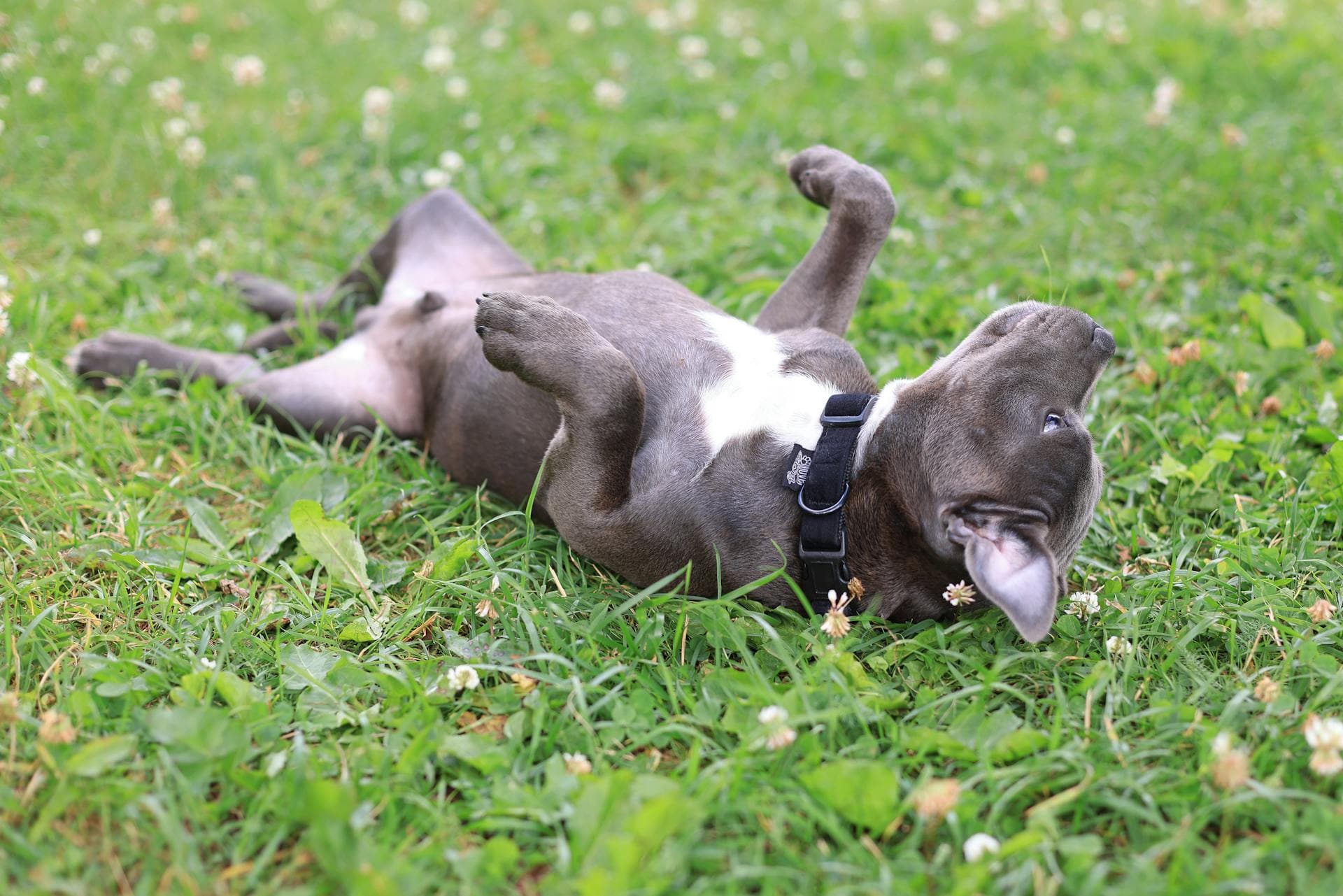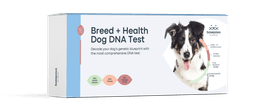Has your dog been licking, sniffing, jumping up, and yawning excessively? These gestures are called appeasement behaviors, and there is a reason why your dog is being like this. Let's dive deep and learn why dogs display appeasement behaviors, their different types, and how to handle and respond.
Types of Appeasement Behaviors in Dogs
Appeasement behavior in dogs is gestures that communicate that they are not a threat and want to de-escalate a situation. Different appeasement examples include licking lips or appeasement kisses, nudging you, sniffing excessively, scratching, yawning, and jumping up.
Submissive Postures and Gestures
Dogs display submissive postures and gestures when seeking attention or diverting the attention they are receiving. Showing submissive behaviors also means that they recognize you as a higher-ranked individual. Some of these gestures include:
Licking and Nuzzling
Licking and nuzzling are submissive gestures in which the dog seeks attention from their owner. The dog may lick lips, ears, nose, and clothes or push the muzzle under your arm or hand to get your attention. If you appreciate this dog's appeasement behavior, you can encourage it by responding with the attention your dog is asking for, like petting or making eye contact when your canine friend tries to push their muzzle against you.
Rolling Over and Exposing the Belly
Rolling over on the back and exposing the belly is a submissive behavior in dogs. If this gesture is accompanied by ears back and tail tucked between their legs or curling up tightly, the dog is trying to communicate that they are withdrawing from and feeling nervous about interaction.
Paw Raising and Tail Tucking
Paw raising and tail tucking are submissive behaviors dogs use to communicate uncertainty or discomfort.
The Purpose of Appeasement Behaviour
Dogs are adorable animals that love peaceful interaction with people and other animals. Hence, your dog exhibits appeasement behavior for the following reasons:
Reducing Social Tension
According to an article by VCA Animal Hospitals, appeasement body gestures and postures are intended to communicate a reduction of a threat. These are ways dogs use to stop or lessen social tension or oncoming aggression by a more confident, bold, or assertive dog or person.
Communicating Safety and Non-Threat
Appeasement gestures are some ways dogs use to communicate that they pose no threat and are completely safe to hang out with. Dogs avert their gaze and lick their lips when approached by another dog to let them know that they have no intention of fighting. You may have noticed your dog displaying appeasement gestures such as licking if you scold them to communicate that they are no threat.
Promoting Social Bonds
When dogs display appeasement behaviors to de-escalate a situation with a desire for friendly interaction, it promotes harmonious social bonds between dogs and people.
Appeasement vs. Fear Responses
Appeasement and fear responses are two different behaviors dogs display to communicate their emotions. Dogs use appeasing meaning body language signals to reduce a perceived threat or conflict. They may show these behaviors when they feel anxious or ambiguous. However, dogs display fear responses when they discern a danger. They may display fear by freezing, hiding, or trying to flee.
How Humans Can Misinterpret Appeasement Signals
Humans have long been misinterpreting dog appeasement signals. It is important to know and correct these misconceptions to build a harmonious relationship with our canine companions.
Common Misconceptions About Submissive Behaviors
Some misconceptions about submissive behaviors include the following:
People often misinterpret a dog’s rolling over or lying down posture as them being guilty. However, they typically show these submissive behaviors to dodge punishment, not because the dog is guilty.
Another misconception humans generally have is that the owner needs to be dominant to control their dog’s behavior. Dogs are social animals that thrive on peaceful and friendly interactions.
Dogs often use appeasement behaviors like lowering their body to look smaller, but it is usually misinterpreted as the dog being aggressive.
Understanding the Context of Dog Body Language
It is essential to understand the context of a dog's body language whenever interpreting their behaviors. Here is what to consider:
See if your dog shows these behaviors when interacting with new people or around some family members.
Notice your dog’s behavior around other dogs at the park or during the walk.
More often, new environments, noises, and changes in their routine can prompt dog appeasement behavior.
Training and Handling Dogs Displaying Appeasement Behaviors
Some effective ways to better train and handle dog appeasement behavior include:
Encouraging Confidence
When your dog displays signs of confidence, it is a good idea to encourage this behavior by rewarding them.
Building Trust
To build trust, avoid threatening your dog and ask others to do the same. Build their trust and confidence with positive training. Knowing how to predict and control their environment boosts a dog’s confidence.
Avoiding Reinforcement
If an appeasement behavior, such as licking or nuzzling is annoying you or other people your dog meets, you must avoid reinforcing it. For example, if you don’t like your canine friend licking, you can put an incompatible behavior in its place. Making your dog hold a toy in their mouth when meeting people is a great way to seek attention without licking.
Conclusion
It is crucial to appropriately respond to a dog's appeasement behavior by understanding the context of their body language. Dogs generally exhibit submissive behaviors when they feel anxious, which is why it is essential that you stay calm, build trust, and encourage their confidence.
Frequently Asked Questions
What are appeasement licks?
Appeasement licks are behaviors that dogs use to communicate that they are in peace and to eliminate a perceived threat.
Why does my dog lick my legs?
Your dog licking your legs can be a way to show affection. However, it may also be a sign of submission.
Why does my dog keep licking his lips and yawning?
According to an article by Spruce Pets, dogs lick their lips and yawn when frustrated or confused. These can also be gestures to ward off aggression.
Whenever my dog bites me, and I tell him to stop, he starts licking where he bit. Is that good?
A playful snap is a dog’s way of showing affection, and then licking where they have bit is how they make it up to you because dogs heal themselves by licking their wounds, and so, they are doing the same with you.
What does it mean when a dog cowers and acts scared but then licks you after being scolded for misbehaving?
Since the licking is an appeasement behavior, your dog is not being affectionate but telling you not to hurt them.



